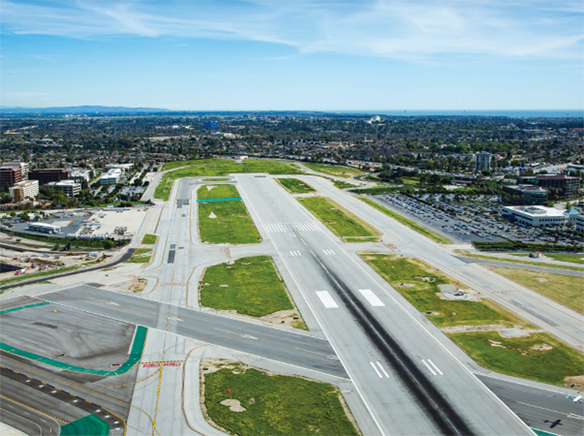The Long Beach Airport is an important part of the Long Beach community that is overflowing with aviation history and played a significant role in the development of the city. During the first couple of decades of the 20th century, Long Beach “airport” consisted of the city’s seven miles of beach, where low tides made for easier takeoffs and landings that often featured fabric-covered bi planes surrounded by ocean spray.
Over the years, the airport expanded as oil was discovered in the area, private plane owners began to lease the space, and pretty soon runways and administrative offices were added as the building was christened as the new municipal airport and officially opened for business in 1942. Since then, the airport has experienced many expansion projects, and is even facing more improvements today. These projects must be conducted with care so that they do not alter the terminal’s 1940s character that lead it to be named a Cultural Heritage Landmark of the city in 1990.
Not only does the airport have an impressive history, it also plays an important role in the Long Beach community today. Over 200 businesses are located on the 1,166 acres of airport property, generating $8.6 billion in economic impact and supporting 46,000 jobs. LGB is a self-supporting enterprise that does not receive local tax dollars, and it acts as a hub of corporate activity conveniently located halfway between the major business and tourism areas of Orange and LA Counties. LGB is a proud partner of four local Long Beach schools and offers a volunteer tour program to thousands of children and adults interested in exploring this facility that has been so crucial to the city’s transportation, business and local economy.
In addition to being the oldest airport in California and one of the world’s busiest in terms of general aviation activity, LGB was named a Top 10 airport in the 2020 USA Today, as well as the Top 10 Most Beautiful. Many passengers report that traveling through, to, or from LGB is a unique and memorable experience. Its easy going nature makes it especially attractive during a post-pandemic holiday season when airports across the nation expect an overwhelming increase in passengers. In a way that largely reflects the sunny skies and laid back vibe of Long Beach, the airport’s design blurs the lines between outdoors and indoors, with palm tree – lined courtyards, shaded wooden boardwalks and lush gardens that allow passengers to soak up some vitamin D and enjoy the fresh air before being confined to an airplane seat. LGB stands out for its ease and effort to provide a stress free experience, one that, as Airport Directr Cynthia Guidry says, “might just include a beverage of your choice by our outdoor fire pit.”
As the airport continues to make improvements to advance the functionality of the airport, the modernization efforts will prioritize the travel experience while taking advantage of the SoCal climate and preserving the original landmark structure.




